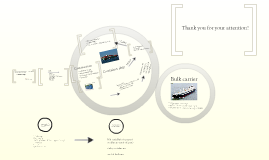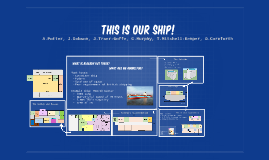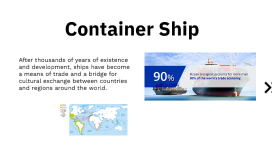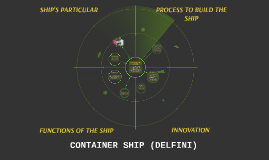Container Ship
Transcript: Container Ship Nomenclature After thousands of years of existence and development, ships have become a means of trade and a bridge for cultural exchange between countries and regions around the world. Largest container ship operators Lists of Busiest ports in the World DWT : Deadweight tonnage The twenty-foot equivalent unit (abbreviated TEU or teu) Global shipbuilding share in milion DWT by nations Question & Answer History There are two main types of dry cargo: bulk cargo and break bulk cargo. Bulk cargoes, like grain or coal, are transported unpackaged in the hull of the ship, generally in large volume, and break bulk cargoes are generally manufactured goods Before the advent of containerization in the 1950s, break-bulk items were loaded, lashed, unlashed and unloaded from the ship one piece at a time. Architrcture Classification In February 1931, the first container ship in the world was launched; the Autocarrier, owned by Southern Railway UK. Operate Manufacturing Design 3. Welding 1. Cutting metal sheet 2. Shaping The earliest container ships after the Second World War were converted oil tankers, built up from surplus T2 tankers after World War II In 1766 James Brindley designed the box boat "Starvationer" with 10 wooden containers, to transport coal from Worsley Delph to Manchester Malcom Purcell McLean (1913-2001) SeaLand - the first container shipping company On April 26, 1956, the first of these rebuilt container vessels, Ideal X, left the Port Newark in New Jersey In 1934, it took workers at a European port six days to load the American cargo ship The Warrior with 194,582 different types of cargo (from kerosene barrels to wooden planks to sacks). road load). After a 10-day journey, the ship docked at a port in the US, and the team of porters took another four days to move all this cargo to the mainland. Containerization has increased the efficiency of moving traditional break-bulk cargoes significantly, reducing shipping time by 84% and costs by 35% 4. Assemble module 5. Installing engine Characteristics: very big, high power, high torque, crankshaft is long, low rpm 6. Coating Testing Simulator 7. Lauching ship

















